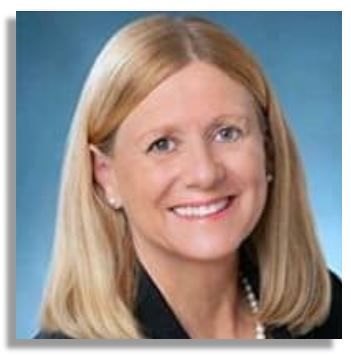American Liver Foundation Announces First Federally-Funded Research on MASLD
The national study on the true prevalence of metabolic dysfunction-associated liver disease is essential to screening, prevention, and treatment efforts, says AFL CEO Stiehl.
The American Liver Foundation (ALF) announced today the first-ever national study to assess the prevalence of metabolic dysfunction-associated liver disease (MASLD)* in the US.1 The research, which will evaluate the prevalence, diagnoses, treatments, and complications associated with MASLD, will be conducted by the Agency for Healthcare Research and Quality (AHRQ) in collaboration with “other federal agency stakeholders.”
Lorraine Stiehl, CEO
American Liver Foundation
American Liver Foundation

Lorraine Stiehl, chief executive officer of the ALF, referred to MASLD as a “looming public health crisis” and lauded Senator Bill Cassidy (R-LA) for championing the research effort on Capital Hill. A comprehensive plan to push back against the disease, estimated to affect between 80 and 100 million US adults, requires a clear picture of the true prevalence and should include focused efforts to address barriers to prevention, diagnosis, and treatment, Stiehl said in the ALF statement.1
“We are incredibly thankful for our advocates who have been meeting with, and writing to, their Members of Congress over the past year to support this critical study, and to the American Society of Transplantation for their partnership on this important initiative,” she added.1
ALF outlined the specific goals for the study:
- Assess the prevalence of [MASLD] in the United States
- Assess the costs associated with individuals diagnosed with [MASLD], including the costs to patients, families, and government programs
- Assess the costs and impact on patients and the healthcare system if [MASLD] is unaddressed and progresses to [metabolic dysfunction-associated steatohepatitis (NASH)], liver failure, poor liver function, or liver transplant
- Identify and address barriers to preventing, diagnosing, and treating [MASLD] and [MASH]
- Include an analysis of any disparities in access to care and other outcomes, such as health status, among minority populations.
The onset of MASLD is largely asymptomatic, and it often goes undetected for years. Naim Alkhouri, MD, chief medical officer of the SLD program at Arizona Liver Health, says it is imperative that clinicians maintain a high level of suspicion for the disease among their patients at greatest risk, including those with obesity, type 2 diabetes, and metabolic syndrome.2 According to the AFL, MASLD affects 75% of individuals with overweight and 90% of those with severe obesity.1 Alkhouri points to data that show up to 55% to 60% of individuals with type 2 diabetes have MASLD.2 People from Hispanic and Asian communities are also at higher risk than other populations.1 He suggests that screening for the disease among those most vulnerable should be routine and says that initial tests are straightforward and provide critical information on not just presence of MASLD but on the severity.2 Left untreated, MASLD may progress to metabolic dysfunction-associated steatohepatitis, or MASH. In advanced stages, MASH can lead to cirrhosis and to hepatocellular carcinoma; in fact, MASH will become the leading cause of liver transplantation in the US by 2025.1
Findings from an ongoing ALF public health initiative underscore how critical early detection in at risk populations is right now. Preliminary data from the Think Liver Think Life campaign show that 64% of individuals screened were found to have some indication of steatotic liver disease. In an ALF online liver health quiz that can assess for MASLD risk factors, 93% of respondents received a positive result for being at risk for the disease.1
Hepatologist Alkhouri stresses that MASLD, before it has progressed to liver fibrosis, is “a very slow disease.” Complete reversal is possible with intensive lifestyle intervention and with “even modest weight loss, like 5 to 10%.” He acknowledges that weight loss is never easy but that it can change the disease course early on.2
Awareness is going to be critical to making inroads against MASLD—among at risk US adults which is where AFL is focused—but also within the medical community where screening is currently very low. Data from the national study announced yesterday will begin to expose the depth and breadth of MASLD prevalence and provide fuel for more in-depth professional education.
"On behalf of the American Society of Transplantation, I was thrilled to learn that NAFLD study language was included in the final Labor HHS Appropriations bill and proud to support these efforts. Data emanating from this critical research will ultimately help us prioritize and guide strategies to diagnose, treat and prevent progression of the most common liver disease in America," Josh Levitsky, MD, MS, president of the American Society of Transplantation,” said in the ALF statement.2